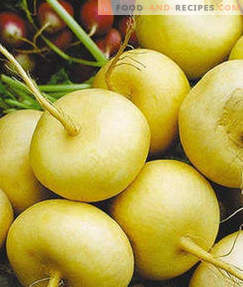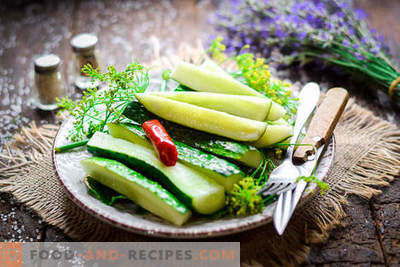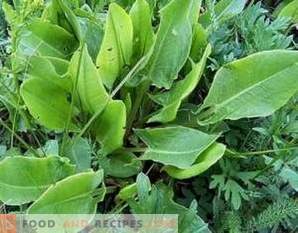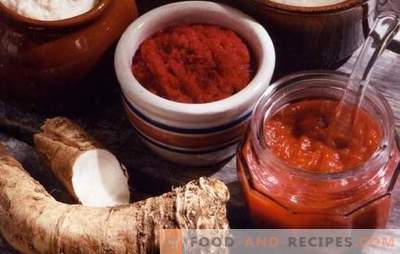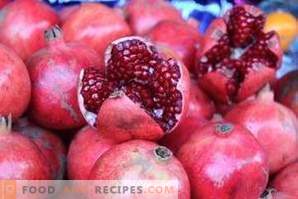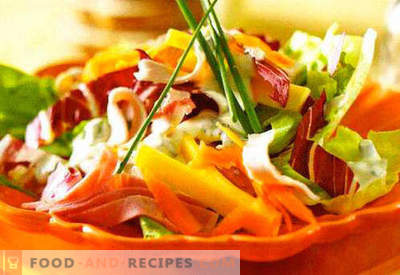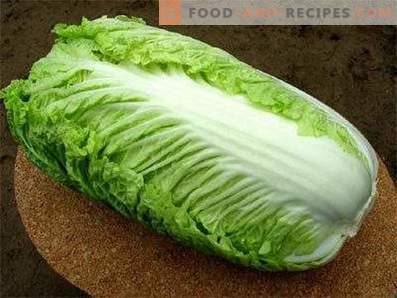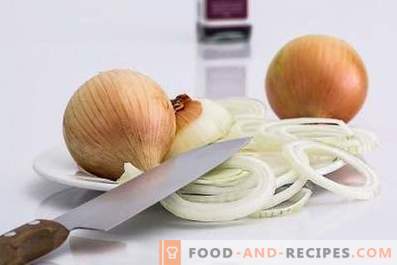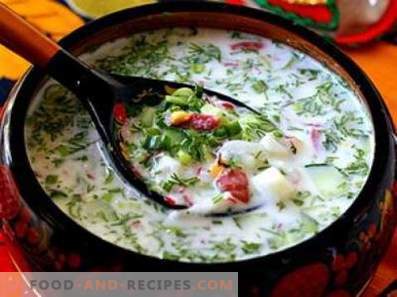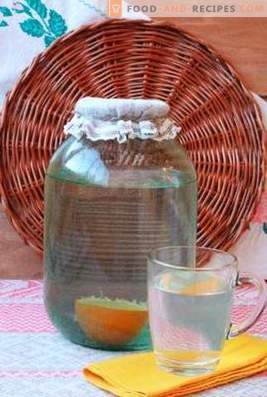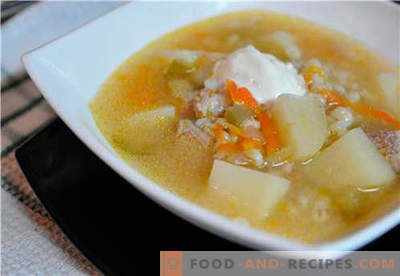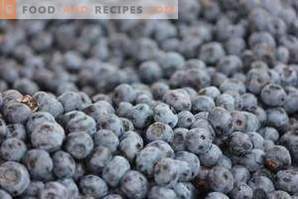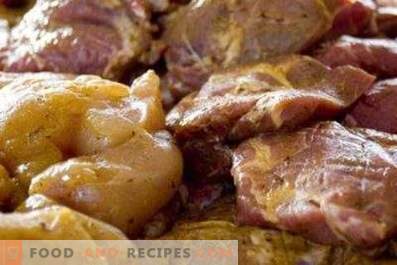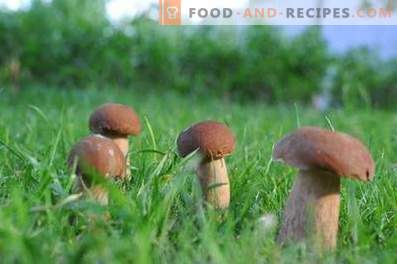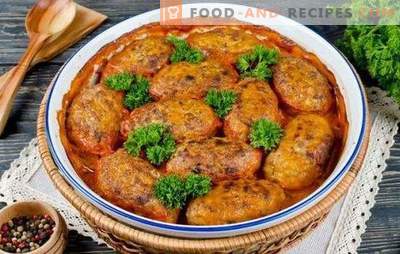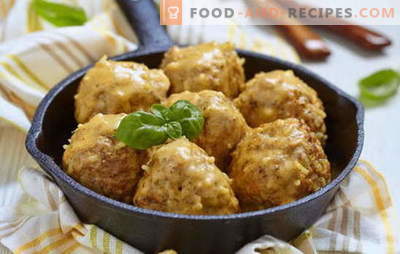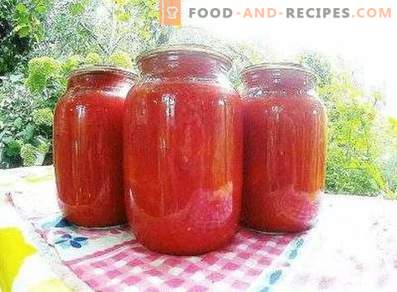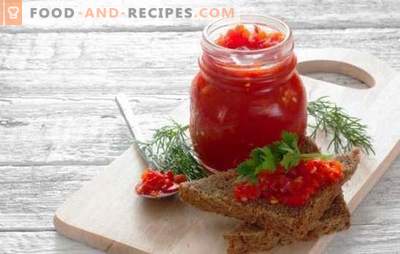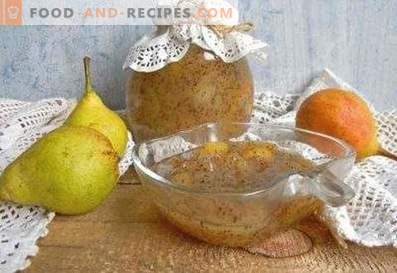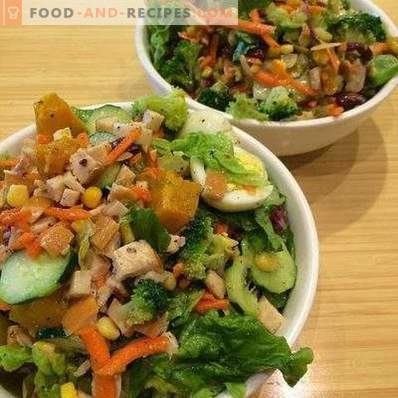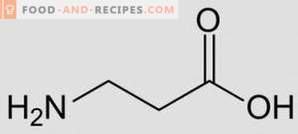
The broad meaning of the term “horseradish” refers to the genus of cabbage plants, otherwise called cruciferous. This genus includes only three species of perennial plants, one of the representatives of which is horseradish (sometimes it is called horseradish village). The main cultivated vegetable of the genus horseradish is this type.
The historical distribution area of horseradish was European territories, excluding the northernmost climatic zones (arctic and subarctic belt). The plant develops well in Siberia and the foothills of the Caucasus, and in the wild it can be found in America and Asia. Wild horseradish is often located in damp lowlands, near the shores of fresh water. The production of this vegetable dates back to ancient times. In particular, in Russia the beginning of the cultivation of the species coincides with the formation of the state as such.
Horseradish was highly regarded as medicine and spice; this is evidenced by the historical documents of the specified period. The inhabitants of European countries, the plant became popular in the XV century, especially among the Germans and the peoples of the Baltic states. The English figuratively called the vegetable “horse radish” and did not use its spicy properties - horseradish served only as a medicine. Currently, all of Europe uses horseradish both in cooking and in medicine.
The horseradish plant is not very capricious in terms of soil preferences. But high-quality large roots are most often formed on light soils - for example, sandy, loamy. If the fertile layer of the earth is too supersaturated with nitrogen compounds, then a strong branching of the root system begins, which reduces their economic importance. For the development of plants are suitable well-lit and quite wet places. Horseradish belongs to light-loving plants, reproduction of which is possible with the help of seeds and vegetatively (that is, from segments of rhizomes). The broad, fleshy horseradish root goes deep into the soil. A straight branching stem up to 1-1.5 m long develops above the ground. The largest leaves of the plant are located near the root system and have an elongated oval shape. Their edges are crenate, and the base resembles a heart shape. The lower leaves are pinnately-divided, in form they are classified as oblong-lanceolate.
At the top of the plant are linear leaves with whole edges. The flowers in horseradish are very small and inconspicuous, white. From them fruit pods develop - oval-oblong and swollen, reaching only 5-6 mm in length. For food purposes, the root of the plant is excavated, which can be used from the second year of the plant’s life. The most favorable period for obtaining roots is late autumn, since the aerial part is already dying. Also, the collection of roots is possible in the spring before the growing season.
Horseradish is widely used in cooking. He is known primarily as a spicy additive to the first and second courses. To do this, use the green leaves of the plant and its roots. After grinding, horseradish is suitable for pickling and salting vegetables; in this case, leaves and roots are also taken. In the above ground form, horseradish is a component of sauces and can serve as a good seasoning for meat and fish dishes. Horseradish make a drink "horseradish" and a special kind of kvass.
Nutritional value of horseradish and vitamins in its composition
In the leaves of the described vegetable can detect large amounts of carbohydrates, proteins, fiber. You should also highlight the high concentration of vitamin A, B9, C. To the presence of valuable macronutrients (sodium, calcium, phosphorus, magnesium, potassium) added phyto-nutritional components (for example, lutein, beta-carotene, zeaxanthin). Daily replenishment of the reserves of these substances in the body has an anti-inflammatory and diuretic effect, decreases the likelihood of nervous disorders. The undeniable increase in appetite accelerates the work of the gastrointestinal tract, prevents the development of viral infections. Free radicals and slags are rapidly eliminated from the body, and blood pressure and the frequency of contractions of the heart muscle stabilize.
Nutritional value 100 g horseradish:
- 3, 274 g of proteins
- 0, 592 g of fats
- 10, 587 g of carbohydrates
- 7, 323 g of dietary fiber
- 0, 264 g of organic acids
- 77, 802 g of water
- 0, 104 g of unsaturated fatty acids
- 0, 123 g of saturated fatty acids
- 6, 655 g of monosaccharides and disaccharides
- 3, 984 g of starch
- 1, 452 g of ash
Vitamins in 100 g of horseradish:
- 55, 873 mg of ascorbic acid (C)
- 0, 084 mg of thiamine (B1)
- 0, 105 mg of riboflavin (B2)
- 0, 719 mg of pyridoxine (B6)
- 37, 362 mkg of folic acid (B9)
- 0, 426 mg of vitamin PP
- 0 982 mg of niacin equivalent (PP)
- 0, 182 mg of tocopherol (E)
Energy value of horseradish
Horseradish is characterized by rather low energy values. In its composition are biologically active compounds that greatly accelerate the processes of metabolism and excrete toxins and toxins from the body. Thus, due to the use of this vegetable metabolic processes are enhanced; the body quickly digests the incoming food, which contributes to weight loss.
However, horseradish is also known for its ability to cause appetite. Therefore, it is difficult to call it a universal component of the diet:
- 100 g horseradish calories 60 kcal;
- caloric content of the root of average weight (1 kg) is equal to 600 kcal.
Very often, horseradish is prepared with a special nutritional mixture in order to lose excess weight. It consists of this vegetable with the addition of lemon and honey. The product is consumed before meals in small quantities. One of the popular proportions is the following: 100 grams of grated horseradish, two tablespoons of honey and juice of half a lemon. The mixture should be kept in a closed container in the refrigerator and eat no more than one teaspoon at a time.
After that, digestive processes are normalized, constipation is cured, the efficiency of metabolism increases, slag deposits are removed. However, lovers of healthy food and losing weight should be remembered that such a mixture should not be abused. Before such frequent use of horseradish, it is important to carefully examine the contraindications and in some cases consult with your doctor.
Macro and trace elements in horseradish
The vegetable described contains many macronutrients. In particular, potassium in the composition of horseradish fills 23% of daily needs, phosphorus - 16%, and calcium - 12%. Of the trace elements, only iron is released; its content in 100 g of vegetable corresponds to 11% of daily demand.
Macroelements in 100 g horseradish:
- 119, 334 mg of calcium (Ca)
- 579, 134 mg of potassium (K)
- 36, 243 mg of magnesium (Mg)
- 130, 628 mg of phosphorus (P)
- 100, 143 mg of sodium (Na)
Trace elements in 100 g of horseradish:
- 2, 351 mg of iron (Fe)
Useful properties of horseradish
- Horseradish is one of the champions in the content of ascorbic acid. Even citrus fruits (lemon, orange) and black currant are characterized by a lower concentration of vitamin C. Only ripe red pepper contains 100 g slightly more ascorbic acid than horseradish. The vegetable contains a large amount of volatile components that fight harmful microorganisms. These components - the so-called phytoncides - are responsible for the bactericidal properties of the product.
- Horseradish roots contain the glycoside sinigrin, from which lysozyme and allyl mustard oil are obtained from the cleavage reaction. The first compound destroys the pathogenic microbes, complementing the bactericidal properties of horseradish. Allyl mustard oil gives the vegetable a sharp taste and characteristic odor, due to which the product has become a spice. However, it is important to remember that this mustard compound acts sharply at the local level and can provoke skin flushing and acute pain. After prolonged exposure, burns or even gangrene can occur.
- The leaves and root system of the plant are rich not only with ascorbic acid, but also with the enzyme myrosin and allyl mustard essential oil. Vapors of the described oil can cause severe coughing and watery eyes. However, in small doses, the allyl compound contributes to the effective secretion of gastric juice, increasing the appetite before eating. Excess doses of products with a high content of this oil can cause severe forms of gastroenteritis.
- Medicine has long been actively exploiting the healing properties of horseradish. It quickly normalizes gastric activity. The vegetable also has expectorant and choleretic action, and is able to fight scurvy and vitamin deficiencies.
- Horseradish is prescribed in case of colds, after inflammations, to correct problems of the stomach, liver and intestines, with gout, skin diseases and disorders of the bladder.
- Folk healers used horseradish to combat rheumatism. After rubbing on the grated gruel of horseradish was applied to the fabric and kept in a sore spot as a mustard plaster.
- Vegetables are often added to the menu in order to prevent ORZ. In order not to catch a cold after a strong hypothermia, you can make poultices for feet and shins from horseradish.
- Fresh juice from the roots of horseradish has long been considered an effective diuretic; such information came from Indian doctors. It is used as a distraction during the inflammatory processes of the sciatic nerve.
- With a strong cough a mixture of finely grated horseradish with honey (1: 1 ratio) helps quickly. This home remedy is given in the amount of 1 teaspoon 2-3 times a day.
- Medical research has described the ability of horseradish vapors to fight metastasis. Horseradish root is rubbed on a grater, and couples need to breathe for 15-20 minutes twice a day.
- A special mixture is used to combat the flux: 1 teaspoon of grated horseradish is filled with a glass of water and infused for 4-5 hours. Strained infusion need to rinse your mouth every half hour, and the flux will quickly pass.
Contraindications to the use of horseradish
Horseradish should not be used in diseases of the kidneys, liver, stomach and intestines. The danger is that even a mild stage of the gastrointestinal illness can become acute if you abuse this vegetable or start using it without consulting your doctor. Even for people with a healthy gastrointestinal tract, it is important to follow the measure, including such a sharp product in the diet.
Vegetable should not be used by pregnant women and children under 4 years old. With heavy menstruation, it is better to refrain from consuming this product, since bleeding may increase. Horseradish is dangerous for people with impaired thyroid function.
In a healthy person, an overdose of horseradish can lead to increased pressure and even bleeding.
The specificity of horseradish is that its unique healing properties persist for no longer than 7-8 days. After that, the plant becomes just a spice or seasoning without the useful characteristics described above. Therefore, many people prepare the seasonings from horseradish themselves and shortly before serving to the table.

